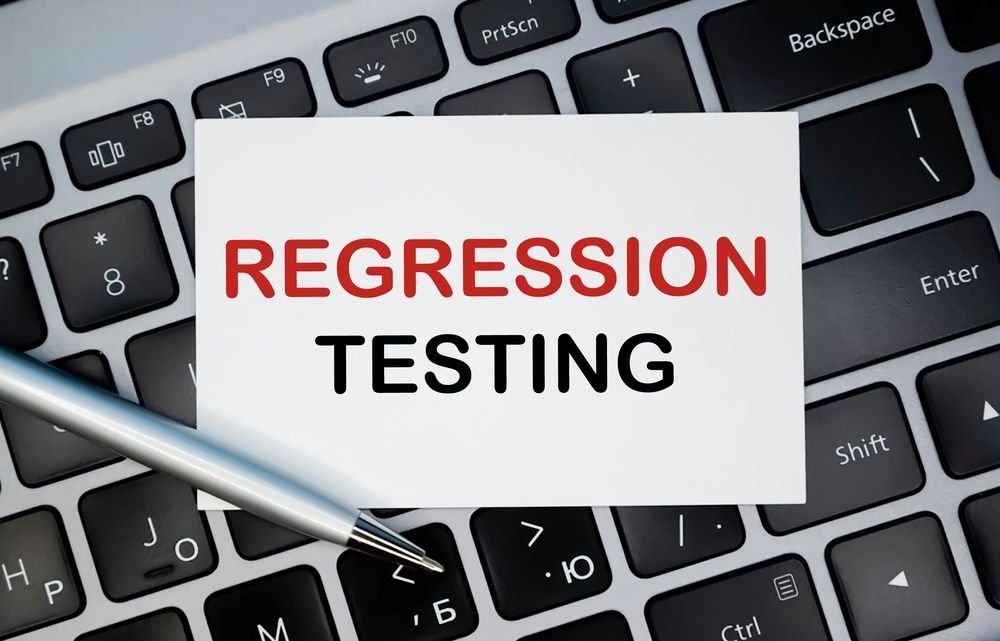AI regression testing evaluates every facet of a previously tested application to make sure that bugs or new features haven’t caused any unanticipated problems with the current functionality. This procedure is essential for identifying issues early in the development cycle, ultimately saving time and money.
Understanding AI Regression Testing Strategy
An AI regression testing strategy is the roadmap or action plan that guides a successful software testing process. It outlines the steps that need to be followed in the software testing process to ensure that updates, bug fixes, or new features have not broken the existing functionality. It provides details about test objectives, testing execution time, resources, the method to be used, and the testing environment.
To guarantee that the regression testing process moves in the right direction and delivers significant results, careful planning and a suitable selection of AI testing technologies are necessary when creating an effective AI regression testing strategy. It is essential to have a well-defined strategy since even minor modifications made to a component of the application can have unanticipated impacts on seemingly unrelated areas.
Benefits of an AI Regression Testing Strategy
AI regression testing strategy ensures application stability by detecting bugs early after code changes. It also boosts test efficiency through automation and intelligent prioritization.
- Ensures Stable Software: In today’s agile environment, AI regression testing helps testers ensure build stability. The application’s features and functionalities in the DevOps environment are continuously tested after every change.
- Speeds Up Defect Resolution: In agile and DevOps situations, AI regression testing aids in early defect detection and resolution, improving the quality of software.
- Enhanced Test Coverage: AI regression testing helps identify and address issues early on. Increased test coverage results from better software quality and speedier bug fixes.
- Boosts Efficiency: Manual testing can be laborious and error-prone for large and complex applications. Repetitive test case execution takes less time with automated AI regression testing, increasing productivity.
- Supports CI/CD Integration: Rapid and secure integration and deployment of changes are achievable by automated AI regression testing, which is essential to CI/CD pipelines.
- Identifies and Rectifies Bugs: An effective AI regression testing process helps identify and fix bugs that emerge after frequent code changes.
- Channelizes Testing Team Efforts: With a robust AI testing strategy, teams can clearly define roles and responsibilities, improving focus and alignment.
- Manages Testing Complexity Easily: As applications grow, a robust strategy helps manage and handle complex regression test suites.
- Ensures Optimum Utilization of Resources and Tools: Proper planning within the strategy ensures teams use AI testing tools efficiently, completing tests in minimal time.
AI Regression Testing Strategies for Stable Software
AI regression testing strategies focus on automating repetitive tests, integrating with CI/CD, and leveraging intelligent test selection. These approaches help maintain software reliability across frequent updates and changes.
- Identify the Need for AI Regression Testing: The first step is recognizing when regression testing is required, ideally following any application changes. This ensures that existing functionalities are verified promptly.
- Prioritize Test Cases for Critical Scenarios: Not all tests need re-execution every time. Prioritize testing areas prone to defects or those frequently used by users.
- Automate Repetitive Tests: Automating frequently executed and regression-prone tests reduces manual effort and increases efficiency. Use robust automation frameworks to build a maintainable suite.
- Keep the Test Suite Organised: Structure the test suite clearly using version control and documentation. Regularly update and sort test cases, and track changes using a version control system.
- Build Testing into the Workflow: AI regression testing should be integrated into the development cycle using CI/CD pipelines to automate tests with each code change. This promotes continuous testing and faster issue detection.
- Maintain a Central Repository: Store the regression test suite in a dedicated repository. Update it regularly with new test cases and remove obsolete ones.
- Use Parallel Test Execution: Running tests in parallel across multiple devices or environments speeds up the testing cycle and shortens feedback loops. This is critical as software complexity grows.
- Cloud Platform for Scalable Testing: Modern testing platforms play a pivotal role in optimizing AI regression testing workflows. LambdaTest is a GenAI-native test execution platform that allows you to run manual and automated tests at scale across 3000+ real browsers and OS combinations, helping teams ensure consistent performance across environments.
For teams adopting AI testing, LambdaTestKaneAI proves especially effective. It enhances AI regression testing by enabling natural language-based test planning, authoring, and maintenance, significantly reducing manual effort. By integrating AI-powered analytics, teams can eliminate inefficiencies, identify flaky or redundant tests, and make informed decisions based on actionable insights. Features like parallel test execution, screenshots, video logs, and detailed reports further accelerate test cycles and improve test reliability.
Additionally, with support for popular frameworks like Selenium, Cypress, Playwright, and Python, platforms like LambdaTest seamlessly integrate into existing AI testing workflows, making them an essential part of modern test strategies.
Conclusion
AI regression testing is vital in modern application development. It safeguards existing features while new changes are made, ensuring stability and reliability.
Early defect detection through AI regression testing helps teams resolve issues quickly, reducing the risk of serious failures. By implementing well-defined strategies and leveraging AI-powered tools, teams can ensure high-quality, dependable applications that meet user expectations efficiently.
